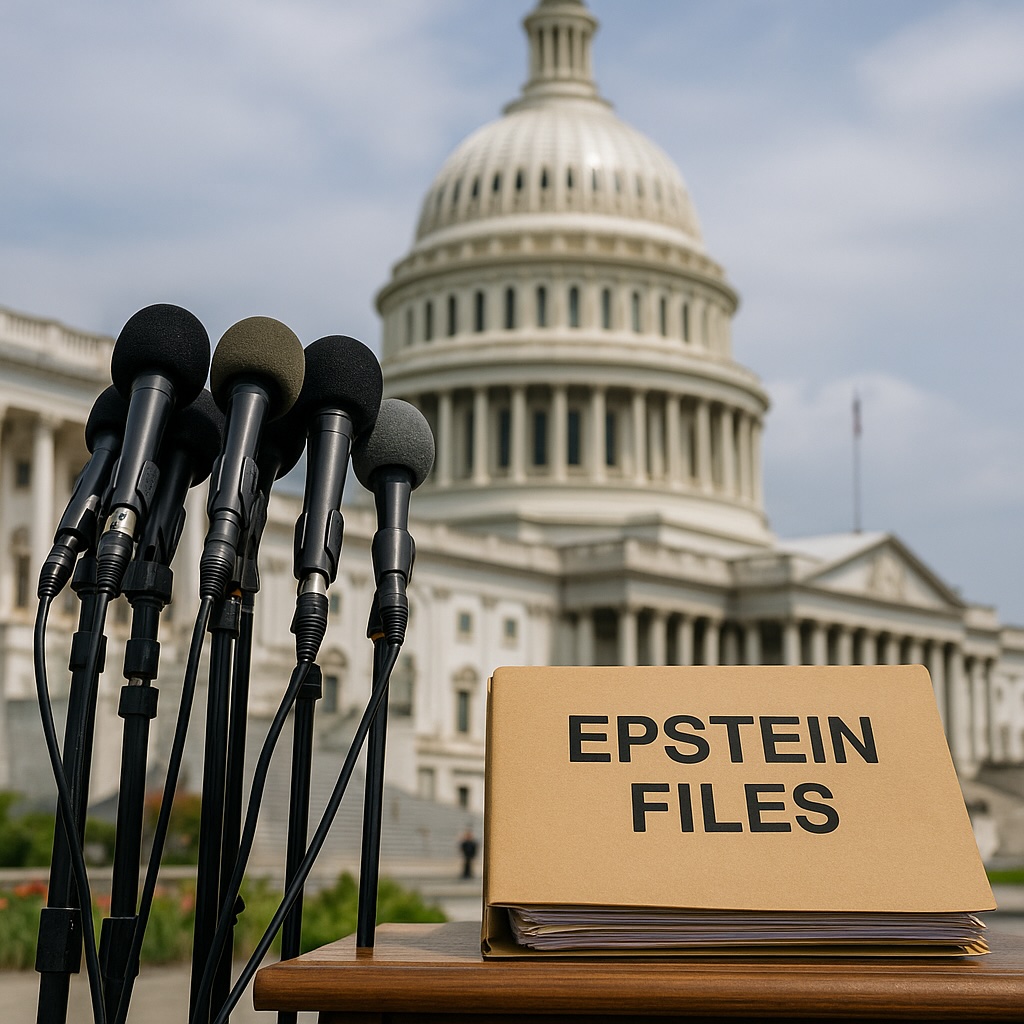Congressional release of Epstein files prompts survivor appeals and fresh political crossfire

Congress bulk-posted a large cache tied to Jeffrey Epstein into the public record. Survivors and their lawyers cheered the move as overdue transparency and urged leaders to “release everything that can be lawfully disclosed.” Reuters and AP describe where the files live and what’s inside—mostly court filings and agency records already cited in prior proceedings.
As the documents landed, a viral claim insisted the cache contains a definitive Epstein client list
. Reporters quickly said that’s not in the release. Outlet coverage diverges on that point: wire services emphasize what the files actually are, while some commentary online treats the drop as proof of a list that hasn’t materialized.
A second claim said DOJ reopened cases
because of the dump. That wasn’t supported by official statements; coverage stresses there are no new prosecutions tied to the posting. Outlet coverage diverges on the video material too: Fox raised a missing minute
outside Epstein’s cell; CBS notes prior reporting that any gap had been accounted for and that the posted clips don’t prove foul play.
Politics cut in fast. At a rally, former President Trump dismissed the transparency push as a Democrat hoax that never ends
. Fox elevated the soundbite; CNN carried it with a focus on Hill infighting over what more can be released.
Why it matters: The drop is less about shock revelations and more about whether Congress can deliver sunlight without spiraling into partisan theatre. The facts may be familiar; the fight over what they mean is not.
Quoted claims examined:
- “The Epstein files prove there is a secret client list.” — False. The bulk release contained filings and agency records already cited in prior proceedings. No new comprehensive “list” exists.
- “The DOJ reopened criminal cases because of these files.” — False. DOJ confirmed no cases were reopened; the released material was previously accounted for.
- “Clips show lawmakers directly implicated in Epstein’s ring.” — Misleading. Clips were partial and lacked evidentiary context; they don’t demonstrate direct involvement.
Coverage reveals inconsistencies in how outlets frame parallel situations. Hypocrisy here is defined as departures from an outlet’s own established standard when applied to comparable actors or contexts.
Standard vs. practice: The president argues alleged financial misconduct makes an official “unfit.” Yet Donald Trump was convicted on 34 felony counts in New York (May 30, 2024) in the hush-money case, even as he seeks to remove a Senate-confirmed Fed governor over allegations unproven in court. This contradiction doesn’t resolve the legal “for cause” threshold, but it directly undercuts the rhetoric about fitness to serve.
Hypocrisy Index Score (HIS): 5/5 • Evidence: Level 3 (official court record + broad coverage). • As of Sept 2, 2025.
| Outlet | Bar | Score |
|---|---|---|
| Reuters |
|
90 |
| AP |
|
88 |
| CBS |
|
85 |
| CNN |
|
82 |
| Fox |
|
78 |
Drift in degrees (0º = on-subject / green at bottom, 180º = full drift / red at top). Hover points for details.
Focus may be a single actor.Quote significance & rationale
- 0º (Reuters): Straight description of where files live and what’s inside.
- 72º (CNN): Emphasis on partisan conflict around disclosure.
- 180º (Fox): Rally rhetoric — “a Democrat hoax that never ends.”
| Outlet | Spin | Factual Integrity | Strategic Silence | Media Distortion | Credibility |
|---|---|---|---|---|---|
| Reuters | Low | High | Low | Low | 90 |
| AP | Low | High | Low | Low | 88 |
| CBS | Low–Moderate | High | Low | Low | 85 |
| CNN | Moderate | High | Low | Low–Moderate | 82 |
| Fox | Moderate | High | Low–Moderate | Moderate | 78 |
Credibility figures mirror the analysis source. Bias remains qualitative in this table.
- CNN: Frames disclosure through partisan accountability and Hill conflict.
- Fox: Amplifies grievance/cover-up narratives and viral “missing minutes.”
- Reuters / AP / CBS: Process-first tone; vary in survivor emphasis and evidentiary caution.
- Reuters & AP: Institutional bias toward process and verification.
- CBS: Bias toward analytical caution and evidentiary boundaries.
- Fox: Novelty/attention bias—salience over full context.
- Reuters — Survivors’ appeals + legislative mechanics; corrects viral claims.
- AP — Procedural focus on postings and document types.
- CNN — Political stakes and Hill pressure around additional disclosure.
- Fox — Emphasis on surveillance footage and rally soundbites.
- CBS — Skeptical read of surveillance implications; cites officials for context.
Images are summarized (not reproduced) due to copyright. Institutional photos signal authority; survivor portraits emphasize human impact; surveillance stills prime skepticism.
| Outlet | Imagery & significance |
|---|---|
| Reuters | Capitol / survivor advocacy — institutional authority with human stakes. |
| AP | Document stacks / upload context — emphasizes bureaucracy over emotion. |
| CNN | Hill live shots / split-screens — dramatizes political conflict. |
| Fox | Surveillance stills / rally imagery — primes suspicion; grievance resonance. |
| CBS | Official briefings / analytical studios — sober tone downplays sensationalism. |